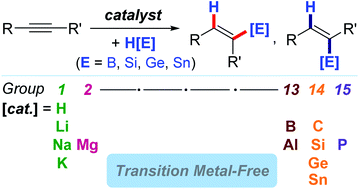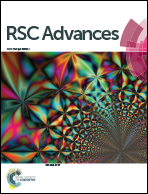Recent advances in transition metal-free catalytic hydroelementation (E = B, Si, Ge, and Sn) of alkynes
Abstract
Catalytic hydroelementation of alkynes mainly with hydroboranes and hydrosilanes gives a straightforward and atom-economical access to a wide range of vinylmetalloids, which are used as synthetically useful and/or reactive species in both synthetic and materials chemistry. Thus far, although numerous transition metal catalysts with well-defined ligand systems have been developed for alkyne hydroelementation, the employed catalysts are mainly based on expensive and potentially toxic metals such as Rh, Pt, and Ir, and their conventional inner-sphere hydride transfer pathways are susceptible to reaction systems, often making it difficult to control the selectivity. In this regard, transition metal-free catalysts for hydroelementation (E = B, Si, etc.) have intensively been reported as an alternative to the conventional metal catalytic regimes over the last decade. In this review, we describe the recent advances in transition metal-free catalytic procedures for alkyne hydroelementation using hydrides based on Si, B, Sn, and Ge with strong emphasis on the variation in the catalytic working mode depending on the intrinsic nature of the reaction systems.

- This article is part of the themed collection: 2020 Reviews in RSC Advances


 Please wait while we load your content...
Please wait while we load your content...